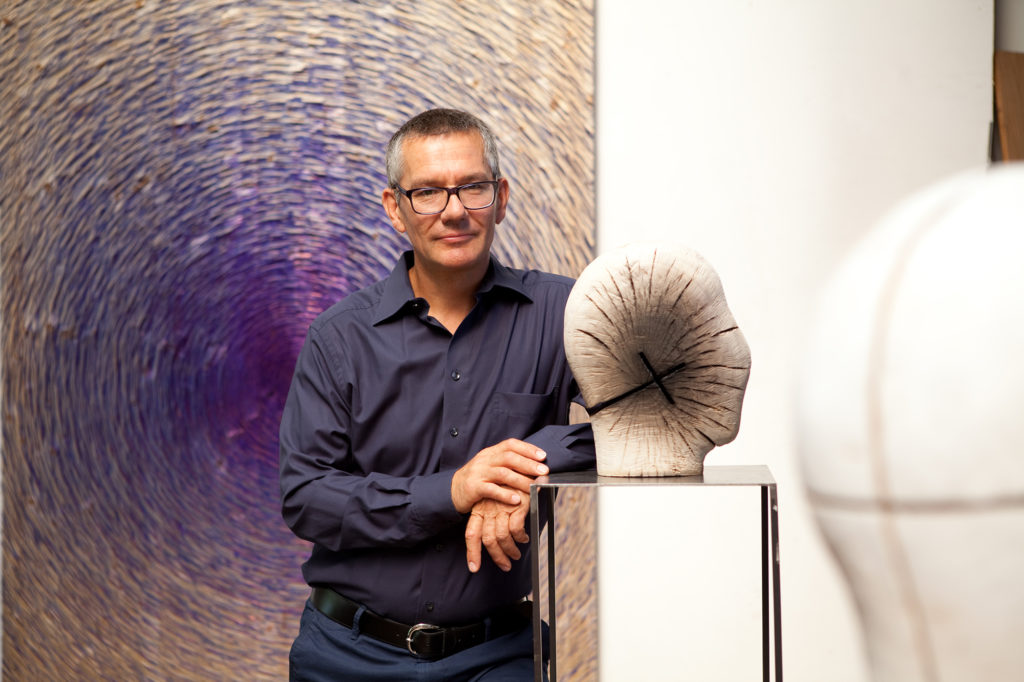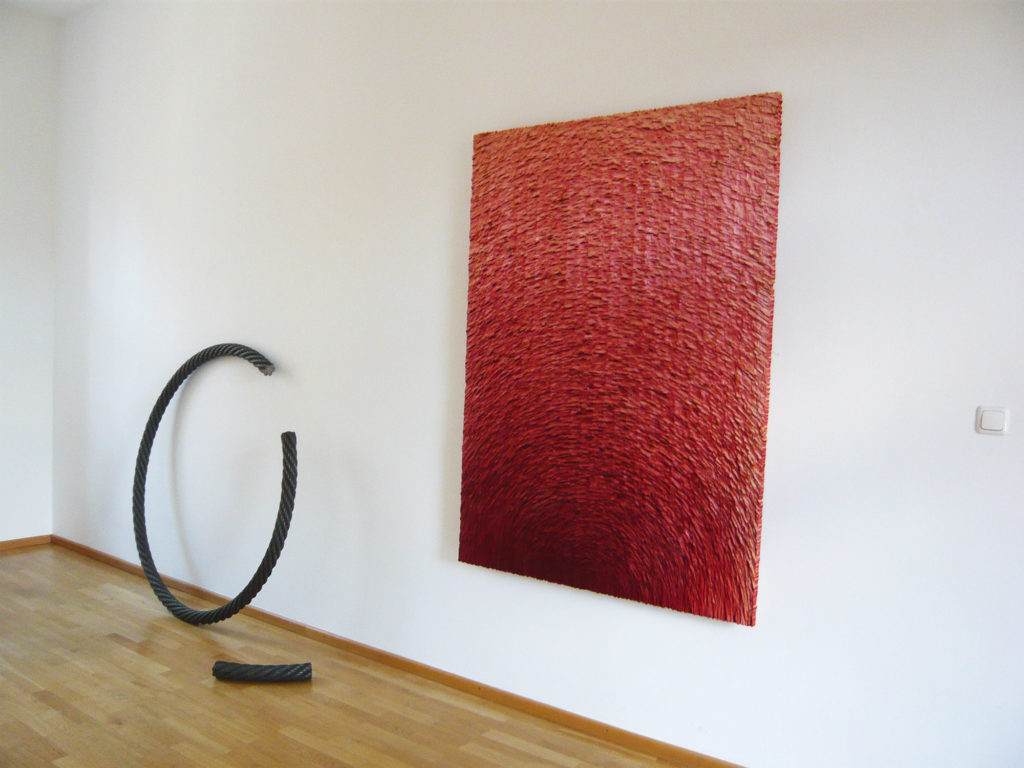Alfred Haberpointner was born in 1966 in Salzburg, Austria. He lives and works in Linz, Austria.
Alfred Haberpointner’s preferred material has always been wood. However, the cones, spheres, cylinders, ovals and cubes he makes are not constructed; they are hewn from the tree trunk. He then opens up the form, leaving traces in the surface by hacking, cutting, burning, slitting or sawing gashes into the wood. In the process, he discovers new approaches for shaping his material. From every finished form, a new one is created. Oversized heads that he hews from one piece of wood – usually nut wood – are then reworked to create a rough surface structure or even a cross-section. Ultimately, the artist is interested in an open surface, in the play of light and, above all in these pieces, in color. After hewing the surface with deliberate strokes of an axe, often from the center outwards, he treats the wood – mainly spruce- or limewood – with a stain and acrylic paint or pigment.


pdf exhibition brochure "Material and Struktur II. Alfred Haberpointner“, 2025
pdf exhibition brochure "Material and Struktur" - 2021
pdf catalog Alfred Haberpointner - 2013












